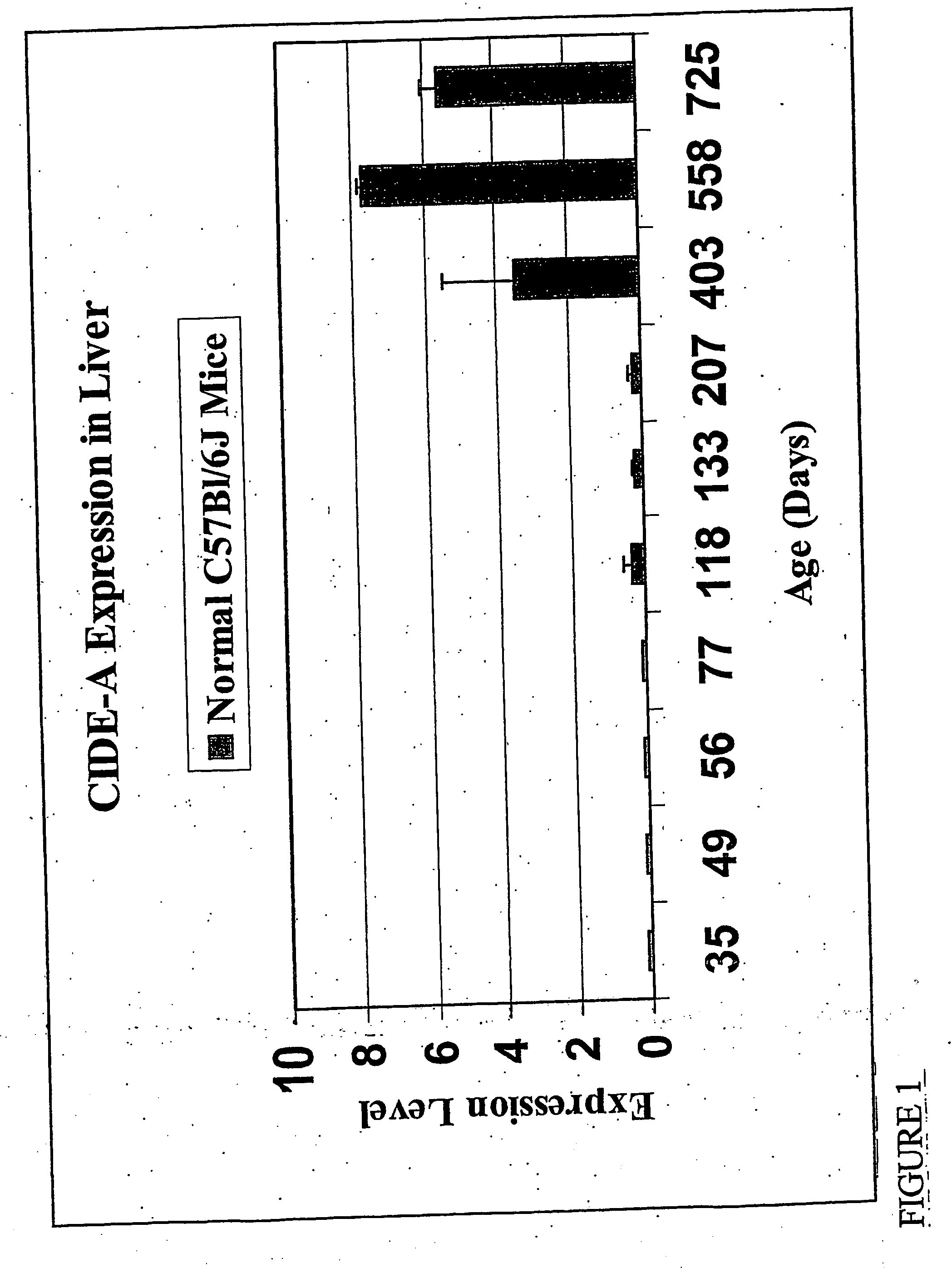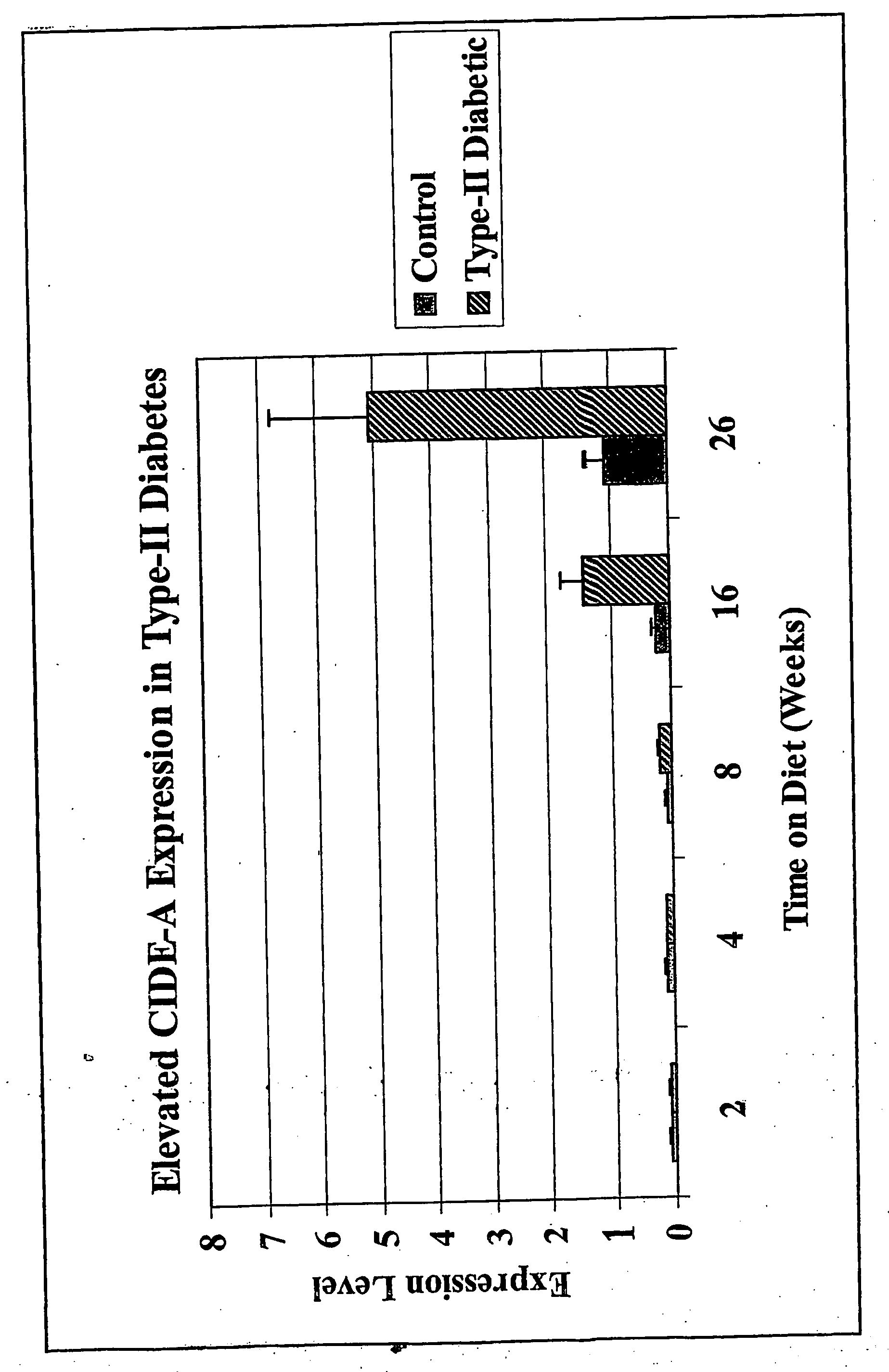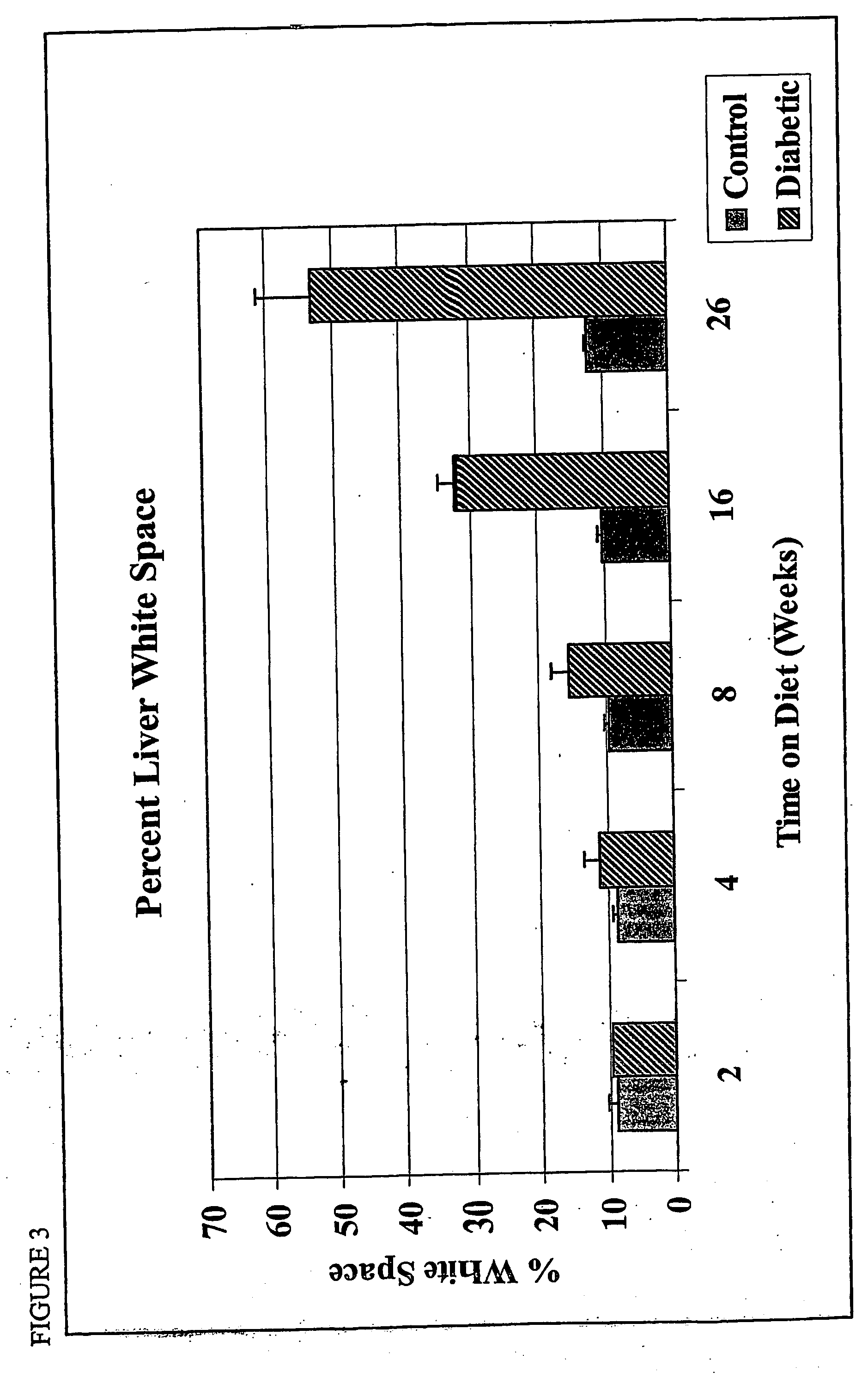Diagnosis and treatment methods related to aging, especially of liver
a technology of liver and spleen, applied in the direction of anti-nucleic acid molecules, drug compositions, peptide/protein ingredients, etc., can solve the problems of inability to determine which of the ablated hormones is responsible for the increase of the longevity of the models, and the likelihood that most people will be able to maintain strict dietary control, etc., to reduce the rate of biological aging, delay the time of onset, and reduce the severity
- Summary
- Abstract
- Description
- Claims
- Application Information
AI Technical Summary
Benefits of technology
Problems solved by technology
Method used
Image
Examples
example 1
[0618] Differentially expressed mouse genes, and corresponding human genes / proteins, were identified as described in this Example, and compiled into Master Table 1.
[0619] Animal Models Upon separation from their mothers (weaning), C57Bl / 6J mice (i.e., C577Bl / 6 mice developed by Jackson Labs) were placed on a normal diet (PMI Nutritiori International Inc., Brentwood, Mo., Prolab RMH3000). Mice were sacrificed at an average of 35, 49, 56, 77, 118, 133, 207, 403, 558 and 725 days of age.
RNA Isolation.
[0620] Total RNA was isolated from livers using the RNA STAT-60 Total PHA / mRNA Isolation Reagent according to the manufacturer's instructions (Tel-Test, Friendswood, Tex.).
Sample Quantification and Quality Assessment
[0621] Total RNA was quantified and assessed for quality on a Bioanalyzer RNA 6000 Nano chip (Agilent). Each chip contained an interconnected set of gel-filled channels that allowed for molecular sieving of nucleic acids. Pin-electrodes in the chip were used to create el...
example 2
[0665] the Amersham CodeLink™ Uniset Mouse I Bioarray Platform was used (example 1) to identify differences in liver gene expression in aging mice. The mice were fed normal chow and were sacrificed at ages ranging from 35 to 725 days. A total of 190 genes were differentially expressed by at least a 2-fold magnitude (Master Table 1). Analysis of the differentially expressed genes identified CIDE-A as the most differentially expressed gene in liver during this age span. The level of mouse CIDE-A expression in these mice is shown in FIG. 1.
[0666] No CIDE-A expression was detected at 35 to 56 days of age (expression level less than 0.2). The expression of CID-A was barely detectable at 118 and 207 days of age (0.36±0.23 and 0.23±0.10, respectivley). However, CIDE-A is readily detected at 403 days of age (3.5±1.99) and the level of expression continues to increase to 7.7 (±0.12) at 558 days of age. Taken together, the level of CIDE-A expression in liver increases at least 38-fold as the...
PUM
| Property | Measurement | Unit |
|---|---|---|
| Fraction | aaaaa | aaaaa |
| Mass | aaaaa | aaaaa |
| Fraction | aaaaa | aaaaa |
Abstract
Description
Claims
Application Information
 Login to View More
Login to View More - R&D
- Intellectual Property
- Life Sciences
- Materials
- Tech Scout
- Unparalleled Data Quality
- Higher Quality Content
- 60% Fewer Hallucinations
Browse by: Latest US Patents, China's latest patents, Technical Efficacy Thesaurus, Application Domain, Technology Topic, Popular Technical Reports.
© 2025 PatSnap. All rights reserved.Legal|Privacy policy|Modern Slavery Act Transparency Statement|Sitemap|About US| Contact US: help@patsnap.com



